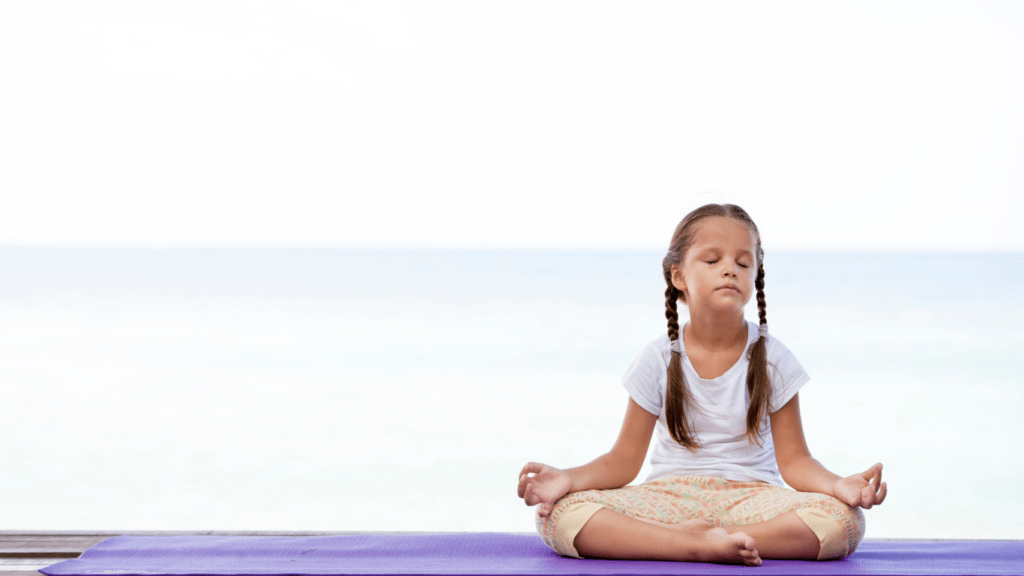Feeling overwhelmed by stress is something many of us can relate to in today’s fast-paced world. But what if I told you that a simple practice like mindful breathing could be the key to finding calm amidst the chaos? As someone who has experienced the transformative power of mindful breathing firsthand, I’m excited to share with you the incredible benefits it offers for stress relief.
When I first started incorporating mindful breathing into my daily routine, I was amazed by how such a seemingly small act could have such a profound impact on my overall well-being. By focusing on my breath, I found a sense of peace and clarity that helped me navigate through challenging moments with a greater sense of ease.
In this article, I’ll delve into the science behind mindful breathing and explore how this practice can be a powerful tool for managing stress in our hectic lives.
Understanding Mindful Breathing
Exploring the concept of mindful breathing reveals a profound technique that has the potential to transform how we approach stress. My journey with mindful breathing has been eye-opening, showing me the incredible impact it can have on my mental and emotional well-being.
Let’s delve deeper into the science behind this practice and how it serves as a powerful ally in managing stress.
Importance of Stress Relief
Stress can take a toll on both our physical and mental health. As someone who has experienced the detrimental effects of stress firsthand, I can attest to the importance of finding effective ways to alleviate it.
Impact of Stress on Health
Stress can manifest in various health issues ranging from headaches, insomnia, to more severe conditions like heart disease and depression. The constant strain of stress on the body can weaken the immune system, making us more susceptible to illnesses.
Benefits of Stress Relief
Engaging in practices like mindful breathing not only helps in calming the mind but also has a positive impact on our overall health. By reducing stress levels, we can lower blood pressure, improve sleep quality, and enhance our ability to cope with everyday challenges.
Prioritizing stress relief is vital for maintaining a healthy mind and body.
Science Behind Mindful Breathing
Exploring the science behind mindful breathing reveals its profound effects on stress management.
Research indicates that mindful breathing activates the body’s relaxation response, reducing the production of stress hormones like cortisol. By focusing on the breath, individuals engage the parasympathetic nervous system, leading to a sense of calm and improved emotional well-being.
Studies show that regular practice of mindful breathing can lower blood pressure, decrease anxiety levels, and enhance overall mental clarity. This technique not only alleviates the immediate symptoms of stress but also builds resilience over time, enabling individuals to better cope with daily challenges.
Furthermore, neuroimaging studies demonstrate that mindful breathing can physically alter brain structure, leading to improvements in areas associated with attention, emotional regulation, and stress response. This reshaping of the brain through consistent practice highlights the transformative power of mindful breathing in rewiring our responses to stressors.
In essence, the science behind mindful breathing underscores its efficacy as a potent tool for stress relief, offering a holistic approach to enhancing mental, emotional, and physical well-being.
Techniques for Practicing Mindful Breathing
Exploring various techniques for practicing mindful breathing can enhance your stress relief experience. Here are some effective methods that I’ve found beneficial:
- Box Breathing: Inhale for a count of four, hold for four, exhale for four, and then pause for another four before repeating. This technique can help regulate breathing patterns and promote relaxation.
- Counted Breaths: Focus on your breath and count each inhalation and exhalation cycle. This practice encourages mindfulness and presence in the moment, reducing stress and anxiety.
- Body Scan Meditation: Start from the top of your head and slowly move your awareness down your body, noticing any tension or discomfort. Mindfully breathe into those areas, releasing the tension with each exhale.
- 4-7-8 Breathing: Inhale through your nose for a count of four, hold for seven, and exhale through your mouth for a count of eight. This technique is known for promoting calmness and improving sleep quality.
- Visualization: Combine deep breathing with visualization by imagining a peaceful place or scenario while focusing on your breath. This technique can transport you to a serene mental space, reducing stress and increasing relaxation.
- Walking Meditation: Practice mindfulness while walking by paying attention to each step and coordinating your breath with your movement. This technique can help center your mind and body, promoting a sense of calmness.
- Guided Breathing Exercises: Utilize guided meditation apps or recordings that offer structured breathing exercises. These resources can help you stay focused and guide you through different breathing techniques for stress relief.
Incorporating these mindful breathing techniques into your daily routine can have a profound impact on your stress levels and overall well-being. Experiment with these approaches to find the ones that resonate most with you and incorporate them into your self-care practices for optimal stress management.
Incorporating Mindful Breathing in Daily Life
Expanding on the practice of mindful breathing, integrating it into daily routines enhances its effectiveness in managing stress and promoting overall well-being. Here are some practical ways to incorporate mindful breathing into everyday life:
- Morning Ritual: Begin the day with a few minutes of mindful breathing. Set aside time upon waking to focus on your breath, setting a positive tone for the day ahead. Taking deep breaths while mindfully observing the inhalation and exhalation can boost your energy and mental clarity.
- Work Breaks: Incorporate short mindful breathing sessions during work breaks. Pausing for a moment to engage in deep, intentional breathing can help refresh your mind, increase focus, and reduce stress levels amidst a busy workday.
- Before Sleep: Wind down in the evening by practicing mindful breathing before bedtime. Calming the mind with deep breaths can relax the body, ease tension, and prepare you for a restful night’s sleep. It can be a soothing way to transition from a hectic day to a peaceful evening.
- During Daily Commute: Utilize moments during your daily commute to practice mindful breathing. Whether driving, taking public transportation, or walking, incorporating mindful breathing can transform a potentially stressful time into a calming and rejuvenating experience.
- Meal Times: Enhance your dining experience by incorporating mindful breathing before meals. Taking a few intentional breaths before eating can promote mindful eating, aid digestion, and bring a sense of relaxation and awareness to the dining experience.
- In Nature: Connect with nature by practicing mindful breathing outdoors. Whether in a park, garden, or natural setting, immersing yourself in nature while focusing on your breath can enhance the calming effects of mindful breathing and deepen your connection with the environment.
- Stressful Situations: When faced with stressful situations, turn to mindful breathing as a quick and effective tool to regain composure. Taking a few mindful breaths can help center your thoughts, reduce anxiety, and approach challenges with a clearer and calmer mindset.
By integrating mindful breathing into various aspects of daily life, I’ve found that it not only helps manage stress but also cultivates a sense of mindfulness, presence, and overall well-being. These practical applications of mindful breathing can be tailored to individual preferences and schedules, offering a versatile approach to incorporating this beneficial practice into daily routines.



 Mindfulness and Meditation Expert
Paulether Masterson is Aura Nature Spark's mindfulness and meditation expert, with extensive training in various meditation techniques and practices. She is dedicated to teaching individuals how to cultivate inner peace and resilience through mindfulness. Paulether offers workshops and resources that help clients incorporate meditation into their daily routines, enhancing their overall well-being. Her calming presence and insightful guidance inspire many to explore the transformative benefits of mindfulness in their lives.
Mindfulness and Meditation Expert
Paulether Masterson is Aura Nature Spark's mindfulness and meditation expert, with extensive training in various meditation techniques and practices. She is dedicated to teaching individuals how to cultivate inner peace and resilience through mindfulness. Paulether offers workshops and resources that help clients incorporate meditation into their daily routines, enhancing their overall well-being. Her calming presence and insightful guidance inspire many to explore the transformative benefits of mindfulness in their lives.
